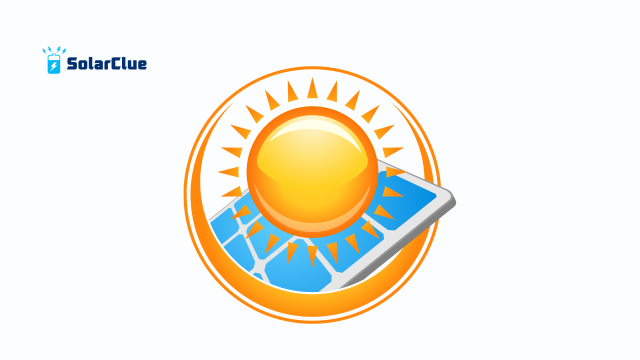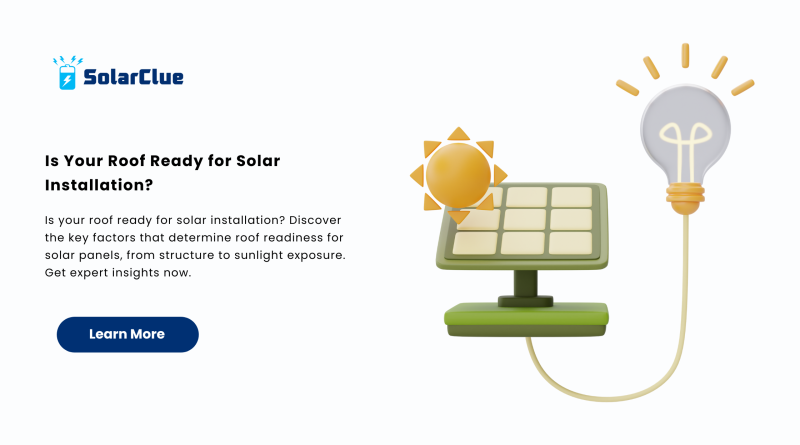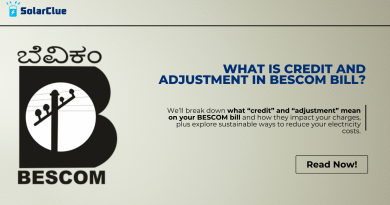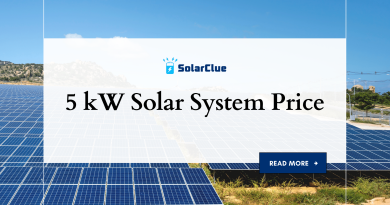Is Your Roof Ready for Solar Installation?
As the demand for solar energy continues to rise, many homeowners are now considering installing solar panels to lower their electricity bills and reduce their carbon footprint. But before jumping into a solar power system, there’s one crucial question you must ask yourself: Is your roof ready for solar installation?
Your roof plays a foundational role in the success of your solar project. Not every roof is automatically suited for roof solar installation, and understanding whether yours meets the necessary criteria can save you both time and money. In this blog, we’ll walk you through everything you need to assess before going solar.
Table of Contents
Why Roof Readiness Matters
The efficiency, safety, and longevity of your solar panel system largely depend on the condition and orientation of your roof. A weak or poorly oriented roof can reduce energy generation, increase costs, or even pose a safety hazard. Preparing your roof properly ensures optimal performance from your solar power system.
Key Factors That Determine Roof Readiness
1. Roof Age and Condition
If your roof is more than 15-20 years old, it may not be ideal for a solar installation. Roofing materials degrade over time, and placing heavy panels on an already aging structure could lead to future repairs or replacements—both costly endeavors. Have a professional inspect your roof for signs of wear and damage before proceeding.
2. Roof Material Type
Some roofing materials are more compatible with solar panels than others. Asphalt shingles, metal, and concrete tiles are generally well-suited for mounting systems. However, slate or wood roofs may pose installation challenges and may require special mounting equipment or added labor costs.
3. Roof Slope and Orientation
To maximize solar energy production, your roof should ideally face south (in the Northern Hemisphere) and have a slope between 15° and 40°. While solar power systems can still function on flat or east/west-facing roofs, efficiency might be lower. Your installer can suggest solutions like angle mounts or tilt frames to optimize performance.
4. Shade and Obstruction Analysis
Shading from trees, chimneys, or nearby buildings can dramatically reduce the effectiveness of your solar panel system. A shading analysis will help determine how much unobstructed sunlight your roof receives throughout the day. Trim overhanging branches or consider microinverters to improve performance in partially shaded areas.
5. Roof Size and Usable Area
For your solar power system to generate enough electricity, you’ll need sufficient roof space to mount an adequate number of panels. A standard 1kW system needs roughly 100 square feet of roof space. The more energy you want to generate, the more space you’ll need.
6. Structural Integrity
Solar installation involves attaching panels and mounting systems that add weight to your roof. Although solar panels are lightweight, an engineer must verify whether your roof structure can handle the added load safely. If structural upgrades are necessary, it’s better to do them before panel installation.
Pre-Installation Roof Assessment Checklist
Before moving forward with roof solar installation, here’s a quick checklist to help you evaluate your roof’s suitability:
-
✅ Is the roof less than 15 years old or recently maintained?
-
✅ Is the roofing material compatible with solar panel mounts?
-
✅ Is the roof orientation favorable (preferably south-facing)?
-
✅ Does your roof get at least 4–6 hours of direct sunlight daily?
-
✅ Is the roof free of major obstructions or shading?
-
✅ Does your roof have enough surface area for your energy needs?
-
✅ Has a structural engineer assessed the load capacity?
If you answered “yes” to most of these, your roof is likely a good candidate for solar installation.

Should You Replace Your Roof Before Installing Solar?
If your roof is nearing the end of its life, replacing it before a solar installation is wise. Removing and reinstalling solar panels later is labor-intensive and costly. Combining roof replacement with solar panel installation can also help you save on labor costs and streamline the process.
Other Installation Alternatives
If your roof isn’t ideal for solar energy systems, don’t worry. You can explore:
-
Ground-mounted solar systems: Great for homes with ample land.
-
Carport solar panels: Useful for covered parking with solar functionality.
-
Solar pergolas: Perfect for garden or patio installations.
These options can still help you enjoy the benefits of solar power systems even if your roof doesn’t cooperate.
Financial and Environmental Benefits
Once your roof is ready and your solar panel system is installed, you’ll start seeing the benefits immediately:
-
Drastically reduced electricity bills
-
Increased property value
-
Lower carbon footprint
-
Long-term energy independence
Installing solar panels is not just an upgrade for your home—it’s a long-term investment in sustainable living.
FAQs
Q1. How long do solar panels last on a roof?
Solar panels typically last 25 to 30 years. Ensure your roof will last at least that long to avoid costly panel removal and reinstallation.
Q2. Can any roof support a solar power system?
Not all roofs can support a solar power system without modifications. Material, orientation, and structural strength all play a role.
Q3. Is it possible to install solar panels on a flat roof?
Yes, flat roofs can host solar installations using tilt frames to angle the panels for optimal sunlight exposure.
Q4. What if my roof has minor shading?
Minor shading can be managed using microinverters or optimizers that allow each panel to work independently.
Q5. Will solar panels damage my roof?
When professionally installed, solar panels won’t damage your roof. In fact, they often protect the covered area from weather wear.
Conclusion
So, is your roof ready for solar installation? If you’ve evaluated your roof based on the criteria above and it checks out, you’re already one step closer to enjoying the financial and environmental perks of solar energy. Before making your final decision, it’s wise to consult with experienced solar professionals who can guide you through the technical aspects and help tailor the system to your needs.
Want expert help in assessing your roof and installing the right solar panel system? Visit solarclue.com or explore more insights at blog.solarclue.com and take your first step toward a brighter, greener future!




